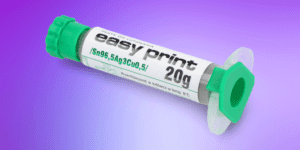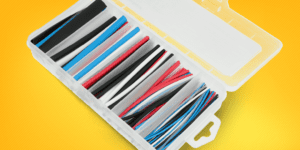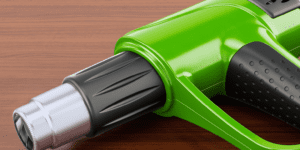Spis treści:
Design constraints sometimes require the use of really small boards. Size matters, they say – but that is not all. Today’s post was created to identify the best of the smallest boards available, taking into account their advantages. Our goal was to pick the best one, but it’s not that easy…
We compared small and somewhat similar boards from different manufacturers. You can find the product links to the boards in the article. Before you move on to expand your understanding of the platform, take a look at our Arduino blog. There you will find a fantastic selection of sample designs, shields and modules – knowledge and creative ideas included.
Seeeduino Nano
Seeeduino Nano is a compact board built on an 8-bit ATmega328P microcontroller. It is fully compatible with Arduino Nano in terms of pins and dimensions, but it turns out to be both better and… cheaper. Mini-USB has been replaced by USB type-C. The board will also work with the Grove I2C connector and the Grove System.
- Microcontroller: ATmega328P
- Power input: USB type-C
- Operating voltage: USB 5 V
- Digital I/O pins: 14
- PWM enabled pins: 6
- Analog I/O pins: 8
- Max clock speed: 16 MHz
- Flash memory: 32 KB
- Max input voltage: USB C 2 A
- Max output voltage: VCC 1 A
- Max voltage on the pin: 3V3 200 mA
- Size: 43 mm x 18 mm
Arduino Micro
Arduino Micro is another option to choose from. Its dimensions are only 48 mm x 18 mm; it was designed to fit into a non-soldered breadboard. It is equipped with the ATmega32U4 and has more peripheral outputs for design purposes – 20 digital inputs / outputs, 7 of which are PWM enabled, and 12 analog I/O pins. It supports popular communication interfaces – UART, I2C, SPI, USB.
- Operating voltage: 7V to 12V
- Microcontroller: ATmega32u4
- Max clock speed: 16 MHz
- SRAM memory: 2,5 kB
- Flash memory: 32 kB (with 4 kB for the bootloader)
- EEPROM Memory: 1 kB
- I/O pins: 20
- PWM enabled pins: 7
- Analog I/O pins: 12
- Serial interfaces: UART, SPI, I2C
- Size: 48 x 18 mm
Arduino Pro Mini 328

The Arduino Pro Mini is similar to the Pro version, but due to size constraints, some pins have been removed from it. For the same reason, it is not compatible with shields, but it still can be used with breadboards. The Pro Mini comes in two versions – 5V/16MHz and 3.3V/8MHz, where 3V is slightly slower but uses less power and can be battery powered, which can be beneficial for miniature designs. Note – Pro Mini requires the use of an external conversion board for programming.
- Operating voltage: 3,35 V – 12 V
- Microcontroller: ATmega328
- Max clock speed: 8 MHz
- SRAM memory: 2 kB
- Flash memory: 32 kB (with 5 kB for the bootloader)
- EEPROM memory: 1 kB
- I/O pins: 14
- PWM enabled pins: 6
- Analog I/O pins: 8
- Serial interfaces: UART, SPI, I2C
- Over-current protection
- The laminate thickness: 0,8 mm
- Weight: <2 g
- Size: 33 x 18 mm
Trinket M0 – Adafruit
Adafruit’s Trinket M0 with the ATSAMD21E18 chip measures only about 27 x 15.3 mm. The chip used is one of the most powerful microcontrollers on the market: 256 KB Flash is 32 times more memory and 32 KB RAM 64 times more memory than the ATtiny85. On the other hand, with such small dimensions, some I/O pins had to be removed. Although it is not an Arduino product, it can be programmed with the Arduino IDE and CircuitPython.
- Operating voltage: 3,3 V
- Max clock speed: 48 MHz
- Microcontroller: ATmel ATSAMD21E18
- Flash memory: 256 kB
- SRAM memory: 32 kB
- Bootloader USB for programming in Arduino IDE or CircuitPython
- Micro-USB for programming (we offer a suitable cable here)
- Three LEDs: green (power), red (for the user, on pin 13), RGB DotStar
- RESET button included
- Digital I/O pins: 5
- Analog I/O pins: 3
- PWM enabled pins: 2
- Size: 27 x 15,3 x 2,75 mm
- Weight: 1,4 g
Beetle – DFRobot
The Beetle is the smallest Arduino Leonardo compatible board and one of the smallest Arduino-compatible ones ever. On a board measuring 20 x 22 mm we find 10 digital pins, 5 analog pins and 4 PWM pins – the limitations are due to minimizing the dimensions. If it’s not enough for you, let’s have a look at the next board on the list – it will have more pins, and it will be even smaller than the Beetle!
- Microcontroller: ATmega32u4
- Max clock speed: 16 MHz
- Operating voltage: 5 V
- Flash memory: 32 kB (with 4kB for the bootloader)
- SRAM memory: 2,5 kB
- EEPROM memory: 1 kB
- Digital I/O pins: 10
- PWM enabled pins: 4
- Analog I/O pins: 5
- UART: 1
- I2C: 1
- Micro-USB: 1
- Power ports: 2
- Size: 22 x 20 x 3,8 mm
Seeeduino XIAO
Relatively new board compatible with the Arduino IDE library: a real David with the strength of a Goliath. It has 14 GPIO pins for various tasks, including 11 digital/analog pins, 10 PWM-enabled pins, DAC, I2C, UART, SPI, SWD.
Despite its small size (only 20 x 17.5 mm), it has a higher speed than most of the boards presented in this article – it perfectly integrates into all projects from wearables to simple robots. The SAMD21 chip offers a rich interface and can function as a small board itself.
- Microcontroller: SAMD21 ARM Cortex M0+
- Max clock speed: 48 MHz
- Flash memory: 256 kB
- SRAM memory: 32 kB
- GPIO 14
- Digital/analog I/O pins: 11
- I2C: 1
- SPI: 1
- UART: 1
- PWM: 10
- Power supply: 5 V – USB C
- Operating voltage: 3,3 V
- USB type-C
- LEDs included: 1x user LED, 1x power LED, 2x serial communication LEDs
- RESET button
- Compatible with Arduino IDE
- Size: 23,5 x 17,5 x 3,5 mm
Now, as is usually the case with similar combinations, choosing the best board is not easy, as it depends on the client’s expectations and the intended use of the board. However, we believe that with the technical data collected in this article, the choice should be easier.
Finally, we move from theory to practice – here is an interesting material about the speed of Arduino from the channel JestemInżynieremPL.
How useful was this post?
Click on a star to rate it!
Average rating 0 / 5. Vote count: 0
No votes so far! Be the first to rate this post.










